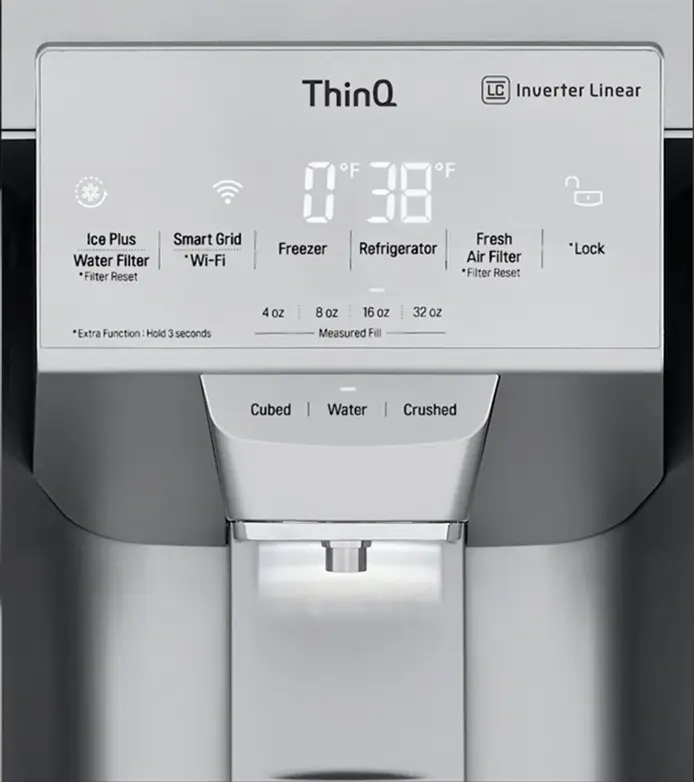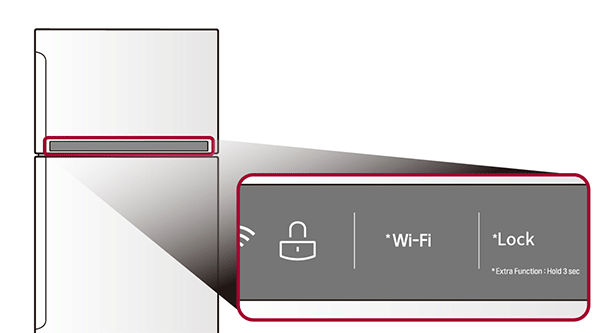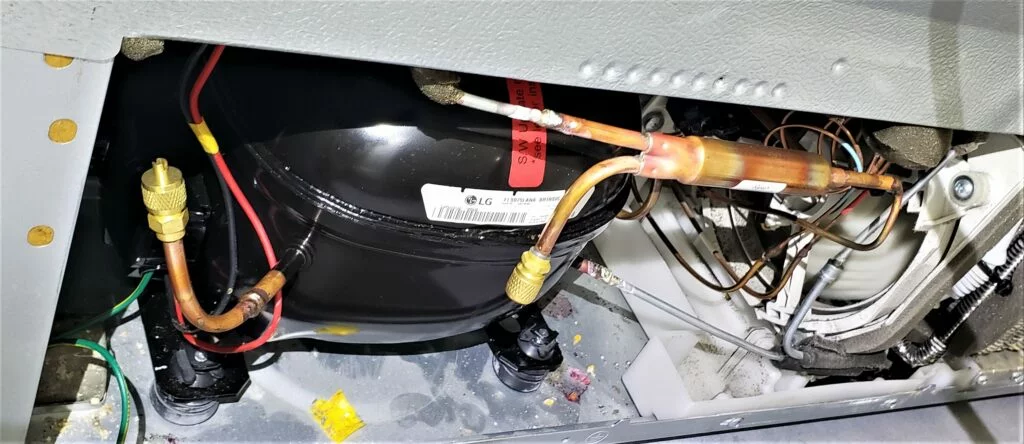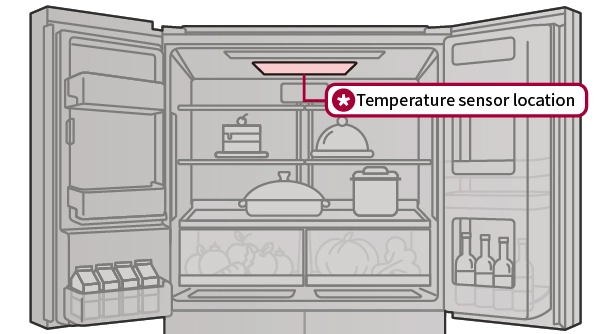When my LG refrigerator control board blinking 3 times, I dived deep into research to decode this distress signal.
I discovered it was a cry for help, signalling a miscommunication between the fridge’s main control board and the display panel.
It’s more than just a random pattern; it’s your fridge’s way of saying, “Hey, I need a little help here!”
Join me as we unravel this mystery together, transforming confusion into clarity.
ieeexplore.ieee.org. (2021) presented a study on the design and validation of a sensorless field-oriented control (FOC) driver for Permanent Magnet Synchronous Motors (PMSMs) in refrigerator compressors. This research aimed to enhance the dynamic performance, power factor, and noise reduction of the PMSMs (ieeexplore.ieee.org).
Key Takeaways
- Blinking 3 Times: Indicates a faulty refrigerator room temperature sensor or a miscommunication between the main control board and the display panel.
- Troubleshooting Steps: Check wiring connections, reset the control panel, inspect the display panel, and consider replacing the main control board if needed.
- Preventive Maintenance: Clean coils regularly, inspect door seals, ensure adequate airflow, avoid overloading, and use a surge protector.
- Professional Help: Seek expert assistance for complex issues, repeat problems, and for warranty-compliant repairs.
What Does the LG Refrigerator Control Board Blinking 3 Times Mean?
A blinking LED light on your LG Refrigerator Control Board Blinking 3 Times means that it indicates a faulty refrigerator room temperature sensor.
When the control board of your LG fridge blinks thrice, it’s not trying to communicate in Morse code.
Instead, it’s an alarm signal indicating a fault in communication between the main control board and the display panel.
It’s like your fridge is trying to text you an SOS message, but all you’re seeing are unreadable emojis.
The Heart of Your Refrigerator: The Control Board

the control board is the brain of your refrigerator. This isn’t just any component; it’s the mission control centre.
It regulates temperature, ensures your food stays fresh, and even manages the defrost cycle.
When this brain encounters issues, it affects the entire appliance.
Did you know that regular maintenance of your refrigerator’s coils can prevent the control board from overheating? A study suggests that cleaning the coils every 6 months can significantly extend the lifespan of your refrigerator.
Step-by-Step Troubleshooting Guide: LG Refrigerator Red Light Blinks 3 Times
Embark on a troubleshooting journey for your LG refrigerator.
Each step is designed to be a smooth pathway towards a solution, ensuring that you are not just fixing a problem, but also understanding your appliance a bit better.
Step 1: Verify Electrical Connections for Faulty Wiring
Let’s start with something straightforward yet crucial. The wiring connections are the unsung heroes ensuring smooth communication between the control board and the display panel.
- Open the Panel: Approach this step like a detective opening a case file. Ensure your fridge is unplugged, and then gently open the panel to reveal the wiring behind the scenes.
- Inspect with Care: Use a flashlight to examine each wire closely. You’re looking for any that seem out of place, loose, or damaged – these are your suspects.
- The Art of Reconnection: If you spot a wire that’s come loose, carefully reconnect it. Think of it as repairing a vital bridge that connects two towns, ensuring smooth travel (or, in this case, communication between parts).
Step 2: Reset Control Panel to Refresh System
Sometimes, all sophisticated technology needs is a simple reset. It’s like giving your fridge a fresh start, a chance to reset its thoughts and get back on track.
- Power Down: Unplug your refrigerator, giving it the silence it needs. Imagine it’s meditating, gathering its thoughts.
- Wait and Reflect: Let it rest for a few minutes. During this time, the fridge’s system clears its memory and sheds any minor glitches that were causing the blinking.
- Power Up: Plug the refrigerator back in. This is the moment of truth. If the blinking stops, your reset spell has worked!
Step 3: Check Display Panel for Visible Issues

The display panel is like the face of your fridge; it shows you what’s going on inside.
A faulty display can lead to miscommunication, resulting in a blinking signal.
- Visual Inspection: Look at the display panel for any obvious signs of trouble – dimming, flickering, or irregular display patterns.
- Gentle Testing: If your fridge allows, try interacting with the display. Change the temperature settings or modes to see if the display responds correctly.
- Consider Replacement: If the display seems unresponsive or if the problem persists, it might be signalling its retirement. Replacing the display panel can sometimes be the fresh start your fridge needs.
Step 4: Replace Main Control Board if Needed
The main control board is the brain of your fridge.
If you’ve walked through the previous steps and the mysterious blinking persists, it might be time to consider a more significant change.
- Last Observations: Before deciding on a replacement, ensure that you’ve exhausted the other possibilities. A new control board is a significant investment.
- Professional Advice: Given the complexity and cost, seek a professional’s opinion. They can confirm if the control board is indeed the culprit and handle the replacement with expertise.
Identifying Common Causes
When your LG refrigerator control board blinks 3 times, it’s not just an arbitrary signal. It’s a cry for help, indicating that something’s amiss.
The Usual Suspects: Potential Causes
Faulty Compressor

This is like the heart of your fridge, pumping life (or in this case, cool air) into your appliance. If the compressor is on the fritz, it could send the control board into a flashing frenzy. Signs of a compressor in distress might include unusual noises or a failure to maintain the right temperature.
Defective Temperature Sensor

Temperature Sensor is your fridge’s thermometer.
If it’s not reading the temperature correctly, it might send false alarms to the control board, leading to those ominous blinks.
Wiring Issues
The nerves of your fridge, connect its brain to other vital parts. Loose or damaged wiring can disrupt communication, causing the control board to blink in confusion. Regular check-ups can prevent these communication breakdowns. Power surges can be silent assassins, damaging the intricate electronic components of your refrigerator. Using a surge protector can shield your appliance from these unexpected spikes, ensuring a longer life for your fridge.
LG Refrigerator 8 Blinks on Board
Your LG fridge’s light blinking 8 times means something isn’t talking right inside the fridge. Normally the parts inside chat with each other to keep things cool, but now they aren’t getting along.
This usually means a repair person is needed to fix the way the parts talk to each other. They’ll be like a translator to get everything working together again.
Other Error Codes to Watch Out For
Sometimes, the blinking is just the tip of the iceberg.
Your fridge might be trying to communicate other issues through different error codes.
Here’s a quick rundown:
- Er/fs: This indicates a problem with the freezer sensor, potentially affecting the temperature balance in your fridge.
- Er/fn: Suggests an issue with the refrigerator fan motor, a key component in maintaining a consistent cool temperature.
- Er/rf: Another fan-related code, pointing towards a malfunction in the refrigerator fan motor, which might need a replacement.
Remember, these codes are your fridge’s way of whispering its troubles to you. Addressing them promptly can prevent a mountain of issues later on.
Preventive Maintenance Tips
Maintaining your LG refrigerator is like nurturing a valuable relationship.
It’s not just about fixing things when they go wrong; it’s about regular care and attention to ensure a long-lasting bond.
Here are some preventive maintenance tips to keep your refrigerator running smoothly, avoiding distress signals like the dreaded 3-time blink.
Regularly Clean Refrigerator Coils
Think of the coils at the back or bottom of your refrigerator as the lungs of the appliance.
When they’re clogged with dust, your fridge has to work harder, which can lead to overheating and stress on the control board.
- Regular Cleaning: Every six months, take a brush or vacuum cleaner and gently clean the coils. This not only ensures efficiency but also prevents potential control board issues.
- Accessibility is Key: Make sure you can easily access the coils. If they’re hard to reach, consider rearranging your space to make this crucial maintenance step a breeze.
Inspect Door Seals for Tight Fit
The door seals are the unsung heroes, keeping the cool air in and the warm air out. A weak seal can make your fridge work overtime, which can lead to wear and tear on the control board.
- Regular Checks: Inspect the seals for any signs of wear or gaps. It’s a simple step that can save you a lot of energy (literally and figuratively).
- Clean for a Perfect Seal: Use a damp cloth with mild detergent to clean the seals. This ensures they’re free from any food residue or grime, maintaining a tight seal.
Allow Adequate Airflow Around Fridge
Your refrigerator needs its personal space, not just for aesthetic reasons but for proper airflow. Poor ventilation can lead to overheating, which is a common cause of electronic component failure.
- Space to Breathe: Ensure there’s enough room around your fridge. This allows air to circulate freely, keeping the components, including the control board, at an optimal temperature.
- No to Overcrowding: Avoid placing heat-emitting appliances too close to your fridge. They need their bubbles to function efficiently.
Prevent Overloading Refrigerator Interior
An overloaded fridge is not just a challenge for finding your favourite snack; it’s also a strain on the appliance’s components.
- Balance is Key: Ensure there’s enough space for air to circulate inside the fridge. This helps in even cooling and prevents the control board from working overtime.
- Organize Wisely: Use shelves and drawers as intended to distribute the weight and contents evenly. A well-organized fridge is not just pleasing to the eye but also to its internal components.
Use Surge Protector for Power Supply
Power surges are like uninvited guests, potentially causing havoc in your appliance’s electronic components. A surge protector can be the shield your fridge needs.
- Invest in Protection: Use a surge protector to safeguard your refrigerator from unexpected voltage spikes. This small investment can prevent major repairs or component replacements in the future.
LG Refrigerator PCB Blinking 3 Times
Look for the room temperature sensor, it’s usually on the fridge’s back panel. See if there’s any damage, corrosion, or loose wires. If it’s messed up, get a new sensor.
Make sure all the sensor connections are tight and not broken. Look out for water damage or corrosion.
Unplug the fridge for about 30 minutes to reset it. Plug it back in and give it 24-48 hours to get back to normal.
When to Seek Professional Help
While it’s empowering to troubleshoot and maintain your LG refrigerator on your own, there are times when calling in the cavalry (aka professional technicians) is the wisest move. Recognizing these moments can save you time, money, and the potential headache of a bigger issue down the line.
Complex Issues: Beyond DIY Territory
Some refrigerator woes are akin to complex puzzles that require a specialized touch. If you’ve walked through all the troubleshooting steps and the issue persists, it’s time to hand over the reins to the experts.
- Repeat Offenders: If the same issue keeps reoccurring, despite your best efforts, it might be a sign of a deeper problem that only a trained eye can spot.
- Technical Mysteries: When you’re facing complex technical issues, like a faulty compressor or a mysterious control board failure, professional diagnosis and repair are your best bet.
The Benefits of Professional Insight
Calling in a professional comes with a set of advantages that go beyond just fixing the immediate problem.
- Accurate Diagnosis: Technicians have the tools and expertise to diagnose issues accurately, ensuring that the real problem is addressed.
- Warranty Wisdom: DIY repairs can sometimes void warranty terms. Professionals ensure that your repairs are compliant with warranty conditions.
- Safety First: Refrigerators are complex appliances with electrical and mechanical components. Professionals ensure that repairs are done safely, protecting you and your appliance.
LG Support: Your Go-To Resource
When in doubt, reaching out to LG’s support can provide guidance, resources, and access to certified technicians who are well-versed in LG appliances.
- LG Support Website: For troubleshooting guides, and manuals, or to schedule a repair, visit LG’s official support page.
- Customer Service: For immediate assistance, LG’s customer service can guide you through troubleshooting steps or help you set up an appointment with a technician.
Conclusion
When my LG refrigerator control board started blinking 3 times, I knew it wasn’t just a fluke. Through research, I discovered it’s a cry for help, signalling a hiccup in the fridge’s communication system. I’ve learned that the path to a solution is paved with patience, a keen eye for detail, and the willingness to dive into a bit of DIY. But when the plot thickens, and the blinking code remains unsolved, I understand the value of calling in the pros.
This journey has taught me not just about my fridge’s quirks but also about the intricate dance of maintenance and mindful intervention.